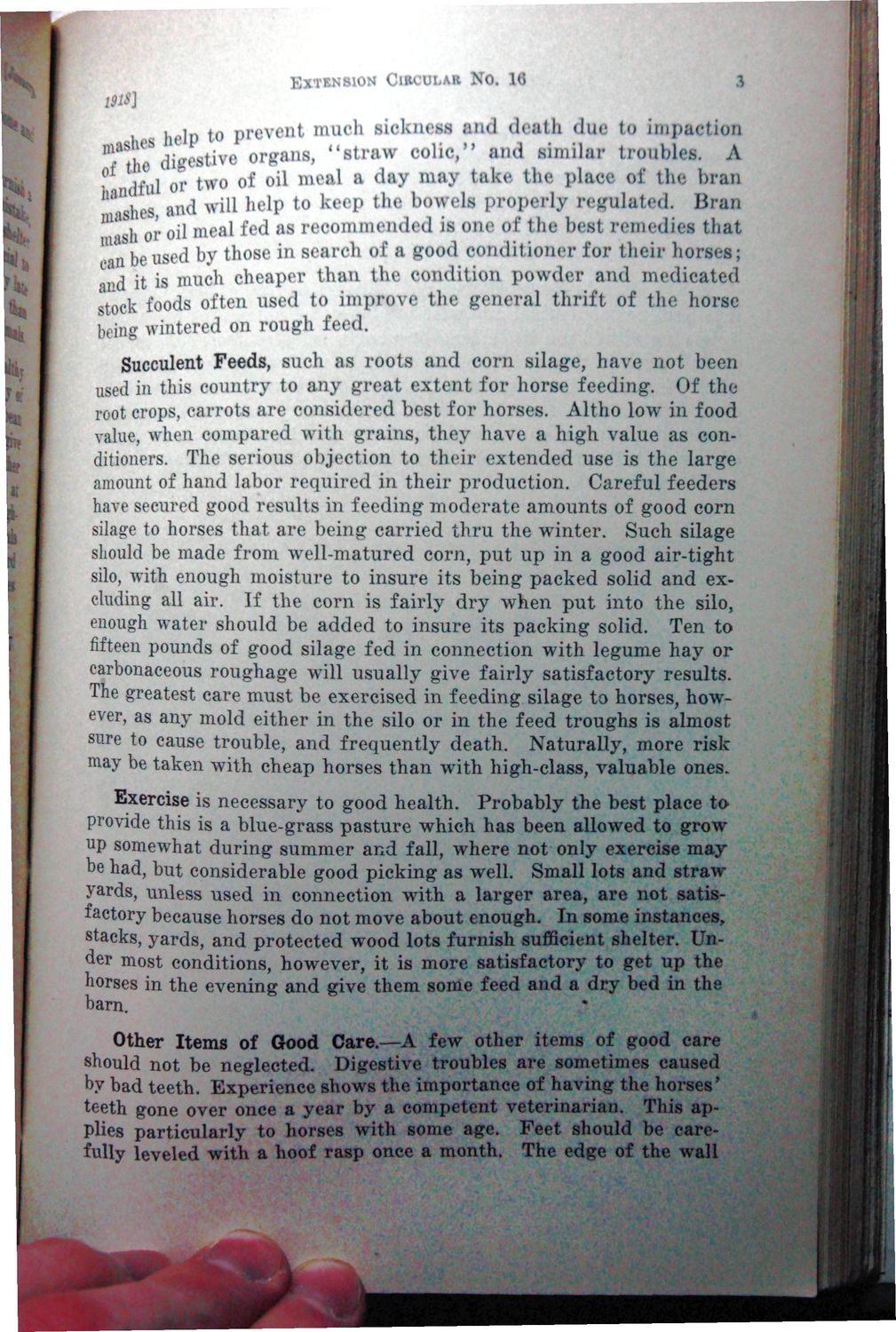| |
| |
Caption: War Publications - WWI Compilation 1923 - Article 43
This is a reduced-resolution page image for fast online browsing.

EXTRACTED TEXT FROM PAGE:
EXTBN810N ClItCULAR NO. 16 J His] * * * t* 4 >/ helo to prevent much sickness and death due to impaction maS S }° digestive organs, "straw colic," t a d similar troubles. A 0t 7/il or two of oil meal a day may take the place of the bran "^shes and will help to keep the bowels properly regulated Bran ma h or oil meal fed as recommended is one of 1 lit* best remedies that ,, a be used by those in search of a good conditioner for their horses; md it is much cheaper than the condition powder and medicated gtock foods often used to improve the general thrift of the horse being wintered on rough feed. Succulent Feeds, such as roots and corn silage, have not been any Of the UStH root crops, carrots are considered best for horses. Altho low in food ins ditioners. The serious objection to their extended use is the large amount of hand labor required in their production. Careful feeders have secured good results in feeding moderate amounts of good corn silage to horses that are being carried thru the winter. Such silage should be made from well-matured corn, put up in a good air-tight silo, with enough moisture to insure its being packed solid and exeluding all air. If the corn is fairly dry when put into the silo, enough water should be added to insure its packing solid. Ten to fifteen pounds of good silage fed in connection with legume hay or carbonaceous roughage will usually give fairly satisfactory results. The greatest care must be exercised in feeding silage to horses, however, as any mold either in the silo or in the feed troughs is almost sure to cause trouble, and frequently death. Naturally, more risk may be taken with cheap horses than with high-class, valuable ones. Exercise is necessary to good health. Probably the best place to provide this is a blue-grass pasture which has been allowed to grow up somewhat during summer and fall, where not only exercise may be had, but considerable good picking as well. Small lots and straw yards, unless used in connection with a larger area, are not satisfactory because horses do not move about enough. In some instances, stacks, yards, and protected wood lots furnish sufficient shelter. Under most conditions, however, it is more satisfactory to get up the horses in the evening and give them some feed and a dry bed in the barn. Other Items of Good Care.—A few other items of good care should not be neglected. Digestive troubles are sometimes caused by bad teeth. Experience shows the importance of having the horses' teeth gone over once a year by a competent veterinarian. This applies particularly to horses with some age. Feet should be carefully leveled with a hoof rasp once a month. The edge of the wall i;
| |